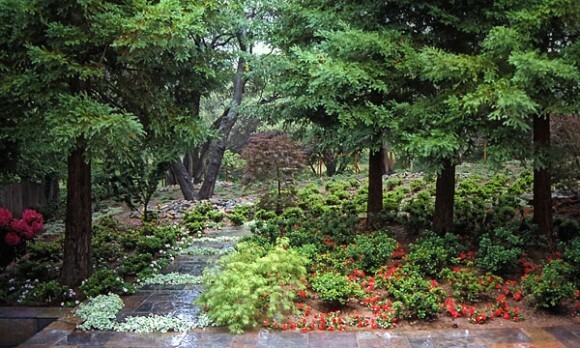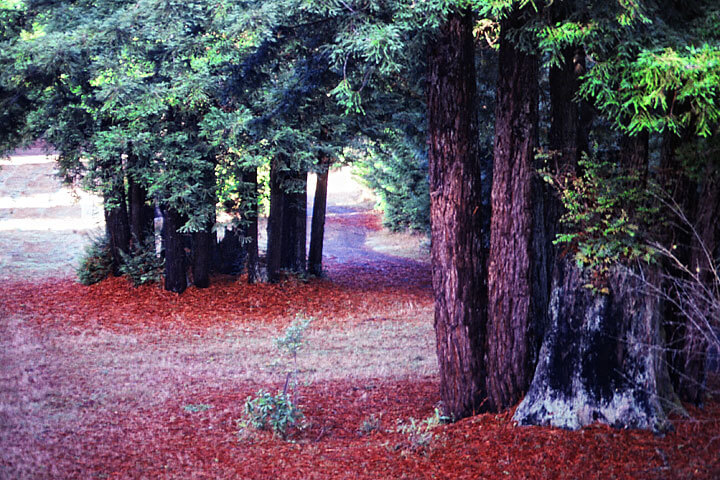
I have lived among coast redwoods all my life, from college days on the northern California coast to years in design offices – specifying them for use in our projects. From spending much time within expansive old and second growth groves I’ve learned exactly what these tallest of trees desire and what not to do when growing coast redwood. They indeed prove far more adaptable than most realize, and this is a fine evergreen for any landscape. In a year when other states are experiencing droughts on the scale of California’s annual dry season, this tree presents a beautiful, evergreen solution for water-challenged gardens – even those well beyond this state’s borders.

Redwood, also known as is Sequoia sempervirens, is a species that proves to be one of the most well adapted natives to container culture. This means it does well at the nursery in pots far better than many other root-finicky native trees. The reason is that this redwood lacks a taproot and produces moderately-sized roots to just ten feet deep. Their strength is in a network of fibrous surface feeder roots that are such active travelers, I have seen them invade mulch piles and work their way up into raised beds located close to a trunk. They feed off the decaying layer of fallen leaves that accumulate many inches deep within a grove. This fine line between the soil and the duff is where the bulk of its nutrition lies.
This demonstrates for us how growing a coast redwood can be done successfully in your own garden, particularly when it’s still very young. The duff layer, the equivalent of about six inches of mulch, is how these surface feeders remain cool and moist through long periods of drought. It explains why they do better in groups of three or more, closely spaced, than they do as an individual. The canopies shade each other’s roots and provide greater accumulations of litter that is so important to root health and protection.
To grow a single redwood tree, it’s important to recreate this exact scenario if it is to mature quickly and remain healthy in all seasons. Add Black Gold Garden Soil to the backfill because it contains aged forest products that are similar in PH to the forest floor. Once the tree is planted and grade is set around its base, mulch with a thick layer of Soil Conditioner to simulate a duff layer. There organic nutrients will sit right on top of the soil where feeder roots can reach them. Spread it all the way to the outer tips of the branches, a point known as the drip line because this is the area in which the tree will eventually produce its most active rooting. Provide enough to create a layer about six inches deep because this is the typical depth of the duff layer in the redwood forest.
Don’t pack down the mulch. If you walk off trail into redwood forests, the natural duff is springy and porous due to the stiffness of the redwood leaves and twigs. This ensures that all rain that falls moves through quickly to the soil where feeder roots lie waiting. Pack your mulch too tightly and it may indeed repel water applied, forcing it to run off beyond the drip line. Let the surface mulch be your guide to where to irrigate the young tree over the first few years to create the wide, but shallow root system of this species.
When your redwood grows older and begins to shade a much larger area, switch to wood chips as a more extensive ground covering surface material. Mix in more Black Gold Garden Compost Blend annually. This provides the nutrition the trees need to reach their towering heights and retain their beautiful evergreen foliage throughout years of rainfall and drought.

